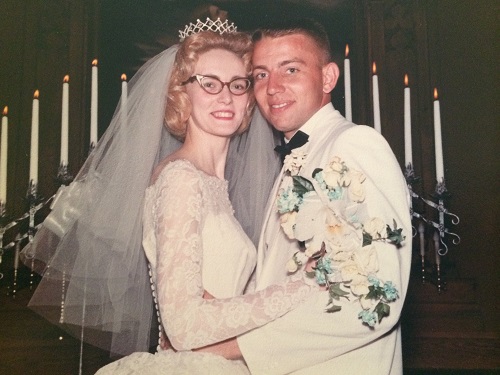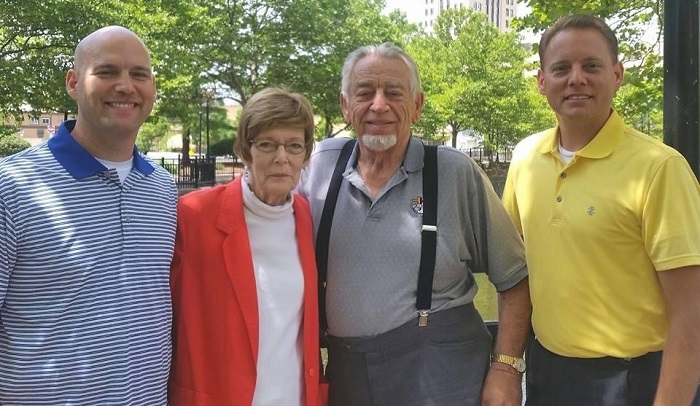
Singing the Praises of Unsung Heroes
July 2, 2013
By Rob Kaminski
MHSAA benchmarks editor
“Standing in the Shadows of Motown” is a documentary released in 2002 celebrating a group of musicians who called themselves the Funk Brothers.
Never heard of them?
All this unheralded group did was rack up more No. 1 hits than the Rolling Stones, Beatles, Beach Boys and Elvis – combined – during their unparalleled run as the musicians who drove the Motown sound.
Smokey Robinson, Diana Ross, Martha Reeves, Marvin Gaye, et al, took the bows; but it was this group of selfless, tireless, talented artists which thrust the vocalists to the front of the stage.
How quickly we recognize those songs from the first notes of that signature bass; the vibrant siren of horns, and rhythmic snapping of fingers before a single lyric is introduced.
And now, ladies and gentlemen, without further ado, we introduce to you the Funk Brothers (and Sisters) of school sports: the athletic administrators.
The profession calls for selfless, tireless, talented individuals who trumpet the efforts of students, orchestrate harmony among coaches and parents, and set the stage for local, affordable entertainment within their communities.
In Michigan, the group assumes this responsibility with unwavering ambition and enthusiasm, setting a solid foundation for the futures of roughly 300,000 athletic participants annually.
As MHSAA Executive Director Jack Roberts notes, “They don’t try to be the stars of the show, but they are indispensable for letting the stars shine – the student-athletes and their coaches.”
It is a role they cherish, taking nearly as much pride in their school family as their own. It’s both a byproduct and a prerequisite for such a job that commands long hours and a knack for interaction with a wide array of personalities and age groups.
Mostly, it’s the young people who make it all worthwhile. They are, after all, the reason the job exists.
“Just watching so many students grow up from immature kids to young adults who now are very successful, and how they appreciate all the extra time you spent with them is rewarding,” said Marc Sonnenfeld, the district athletic director and dean of discipline at Warren Fitzgerald.
“And most important is the, ‘Thank You,’ you get five or 10 years later for pushing them and teaching them life lessons they will never forget.”
In a position largely devoid of gratitude, it’s little wonder that the smallest displays mean the most.
“Having a coach thank me for supporting them, and watching student growth through athletics mean a lot to me,” said Eve Claar, in her fourth year as athletic director and assistant principal at Ann Arbor Pioneer High School.
Brian Gordon, less than a year into his post as director of athletics and physical education for Novi High School/Middle School after 22 years as a coach and teacher in Royal Oak, also enjoys the impromptu reunions.
“One of the things I most enjoyed was having kids come back to the programs either as a coach, parent, or simply as a fan,” Gordon said. “Nothing is better than when I would look behind the backstop and see some former players watching and laughing while listening to me say the same things I had said 10 years earlier.”
Lessons learned along the way
The typical path taken to the administrative office usually includes a stop or two in the coaching realm, which assists in the transition to life outside the playing boundaries.
“The experiences you bring from coaching are a huge help. I made plenty of mistakes as a coach that I see my own coaches make to this day,” said Chris Ervin, in his seventh year as the activities director at St. Johns High School. “You make mistakes, learn from them, and then make sure not to make them again.
“My philosophy – although not realistic, but certainly something to strive for – is this: we would have much better coaches if these three prerequisites were in place. 1) Coaches must be a parent first; 2) must be an official, and 3) must be an athletic director. If coaches had to have these three experiences before being allowed to coach, they would have a whole new perspective when working with students, parents and officials.”
Having been coaches first, however, lends an appreciation to the task of working with students on a daily basis and an understanding as to how an athletic director can best assist his or her coaches.
“Being a coach helped me to learn time management, and I became better at making relationships. In my job now, it helps me to look at things from the coaches’ viewpoints,” said Christian Wilson, the athletic director and assistant principal at Gaylord High School for 11 years. “As a coach, you have an immediate impact on students; administration involves more interaction with adults.”
A coaching background also can cause an athletic director to re-examine his or her days as a coach, and how they might have had a greater awareness for a former administrator’s tasks.
”The learning curve as the athletic director is massive,” said Gordon. “The job itself is huge. As a coach, you just worry about your own sport. As athletic director, I have more than 70 teams to tend to and over 100 coaches to worry about. Coaching and teaching only scratch the surface of what happens in any athletic office every day, but doing that for more than 20 years has helped the transition significantly.”
It is a viewpoint shared by Ken Mohney, a 14-year director of student activities for both the high school and middle school at Mattawan Consolidated Schools.
“Athletic administration opens up the big picture of the department and school mission. Instead of only focusing on the sport that one coaches, administrators must coordinate a program so that all sports collectively enhance the academic success of the entire school,” said Mohney, who also coached three sports at Mattawan for eight years prior to assuming his current duties. “I miss the connection to players and students that I had as a teacher and coach, as it is much more difficult to create and maintain positive relationships with kids in an administrative role.”
The majority of administrators who have had experience coaching admit to missing the close interaction with students and the opportunity to watch them develop into successful adults.
But, in some respects, the number of lives one can reach as an administrator is multiplied, and the scrapbook moments just take on slightly different poses.
Mike Thayer, athletic director and assistant principal for the past six years at Bay City Western High School following a decade at Merrill, recounts one of his proudest days in the business.
“In 1999, Merrill Community Schools had two MHSAA Scholar-Athletes Award winners,” Thayer said. “The senior class that year had approximately 80 students; yet, they produced two winners of this prestigious award. I miss the student interaction and school pride associated with team-building in coaching, but I do not miss the travel.”
Many duties call
Some ADs, however, might rather board the buses than schedule them, another of the many duties carried out on a weekly basis. In some cases, the position is responsible for school-wide transportation, not just athletic transportation.
Where once being the AD meant just that, the title for many in the profession today also includes a “/” before or after the words “athletic director.” It’s a trend which threatens the growth and quality of athletics in the educational mission of schools.
Even in schools where athletics are well entrenched and participation numbers soar, the people leading the charge are being asked to do more with less, often taking on responsibilities once doled out to two, and even three, individuals.
“Some of the larger challenges for me include the budget, balancing a very large work load, and just having enough time to evaluate coaches and programs effectively,” said Claar, who estimates that 60 percent of Pioneer’s 1,893 students participate in at least one sport.
Figuring conservatively, that’s more than 1,000 students deserving of her utmost attention in their extracurricular pursuits. But Claar also is assistant principal to the entire student body.
“Given the additional responsibilities, ADs are often spread too thin,” she said. “The time constraints make it difficult to complete all of the assigned tasks.”
Sonnenfeld, like so many others, attempts to split the time down the middle, but it rarely works out that way by the time he’s also done monitoring the cafeteria during lunch for a couple periods most days.
“I see between 35-60 kids every morning for various discipline issue,” said Sonnenfeld of one portion of his title. “I usually get to athletics by 1:00. I do as much as I can in the time that I have and then stay late on game days and catch up. And in my free time I’m responsible for renting out the athletic facilities. I make myself leave at a normal time on non-event days so that my family sees me.”
Additionally, he oversees the middle school athletic program, and feels guilty that he can’t devote more time to that level. He needn’t feel that way. If it weren’t for Sonnenfeld, the middle school would not have athletics at all.
“The middle school suffers because I cannot get down there to watch over stuff, but this is better than not having any middle school sports at all. They canceled them for a year, and got rid of the middle school athletic coordinator position and put the duties on me,” he said.
Sonnenfeld is not alone. Duties seem similar across the board.
“I am also responsible for coordinating all building facility usage, fundraising and transportation as well as lunch/hallway supervision before, during and after school,” Mohney said. “Athletic administration alone for grades 6-12 in a Class A school is a full-time, 14-hour-a-day job. It is extremely difficult.”
While not included in his title of activities director, Ervin, too, is expected to mete out discipline and supervise lunches on a regular basis.
“Time is a major obstacle,” Ervin said. “When our assistant principal is out of the building I take on most of the discipline in his absence, which leads to days where athletics and activities get zero attention.”
Rewarding pursuit
While frustrations can mount, the leaders of school sports programs also tend to be tough self-critics. Somewhere along the line, these folks noticed sacrifices being made by people like them while they were the same age as today’s students. They now carry those lessons forward.
“I had a very positive experience as a three-sport athlete in high school. My coaches all motivated me toward excellence while providing positive lessons and guidance,” said Mohney. “After graduation and upon returning to Michigan after four years of active military duty, my high school football coach offered me a JV football coaching position and strongly suggested that I may have what it takes to be a good teacher and coach. That guidance inspired me.”
Ditto for Gordon.
“When I hired into Royal Oak, there were several people who impacted me as a professional,” Gordon said. “Chuck Jones was our district AD, and he along with Frank Clouser (varsity baseball coach) really made a difference in where I am today. Chuck was always the constant professional who is arguably the most organized and efficient man I have ever met. Frank is the best coach I have ever been around. I have never met a coach who would break down skills and have the unique ability to teach every facet of the game.”
Creating similar moments for countless student-athletes in their hallways is the ultimate goal for today’s athletic directors. Being told they’ve done just that is enough to make all the cafeteria supervision worthwhile.
“The most rewarding part of athletics is when I observe a student who has come from a tough home environment, and through his or her involvement in athletics, they shine,” said Ervin.
“I always love it when graduated student-athletes come back to visit the school,” Mohney said, “so I can meet their children and hear of their successes in life.”
PHOTO: Greenville athletic director Brian Zdanowski points out features of the home lockerroom at Legacy Field, which opened for his school's football teams last fall.

'Larger-Than-Life' Pennfield AD Admired for Statewide Service
By
Pam Shebest
Special for MHSAA.com
April 14, 2021
BATTLE CREEK — To many Battle Creek sports enthusiasts, Bernie Larson was known as “Mr. Pennfield.”
 But for two former athletes, twins Chris and Cam Larson, that was not the case.
But for two former athletes, twins Chris and Cam Larson, that was not the case.
“I never knew him or thought of him as Mr. Pennfield; he was Dad,” Chris said.
Larson, 78, who served as athletic director at Pennfield for 29 years, died March 14 after an extended illness.
A memorial service is being planned for May 15 at a time and place to be determined.
“A lot more remembrances come back when someone passes,” said Chris Larson, who lives in Virginia. “You hear so many stories from people who remember him, including former students and coaches.
“It’s great to hear the impact he had on so many people that you never knew about.”
Stories are plentiful when it comes to Bernie Larson.
“He was a heckuva golfer,” said Karen Leinaar, the current executive director of the Michigan Interscholastic Athletic Administrators Association (MIAAA) who during an early stop served as athletic director at Delton Kellogg, which with Pennfield for a time was part of the Kalamazoo Valley Association. “If you needed golf balls on the course, everyone said, ‘Just ask Bernie.’ He always had them.”
The reason?
“If he had one ball in his bag, he had 50 or 60 in his bag,” said Larry Wegener, former Battle Creek Central athletic director. “He had milk crates full of golf balls in his garage” that he found on the course or fished out of ponds.
Championship City
When Larson was named Pennfield’s athletic director in 1970, it became a family affair.
“I had no clue, no clue,” said Joni, Larson’s wife of 56 years. “We never trained to be wives of athletic directors. We learned the most from other wives.”
 She became involved in the job, selling tickets at home games. When their sons were old enough, they helped out with the field.
She became involved in the job, selling tickets at home games. When their sons were old enough, they helped out with the field.
“They knew where the flag was kept and how to play the national anthem. They learned how to keep score” and were active in playing sports, she recalled.
“Cam (who lives in Minnesota) played football, baseball and basketball,” Chris Larson said. “I played tennis, golf and basketball. We grew up playing little league baseball and football.”
One family favorite was the yearly athletic directors conference at Grand Traverse Resort.
“He was there for business; we kids were there for fun,” his son said. “As we got older, we went to the auditorium that was filled with booths with sports-related things.
“As a kid we went around and grabbed the swag. It was a kids of athletic directors thing.”
It was not all fun and games.
“Bernie Larson was instrumental putting Battle Creek on the map athletically,” Leinaar said. “Four of (the ADs), Bernie, Ralph Kenyon of Harper Creek, Glen Schulz of Lakeview and Larry Wegener of Central put on the tournaments and had crews of people every year right there helping.
“Their hard work and commitment to the MHSAA, running perfect tournaments, made Battle Creek a stop for athletics for many, many years. Many times, Bernie led the pack.”
In spite of his willingness to help others, there was a caveat, Leinaar said.
“He would say to me, ‘Karen, I’ll help you out however I can, but remember, Pennfield is going to win.’
“Pennfield joined the KVA in the late 1980s, so we saw each other quite a bit. Our football games were always barn burners as were track and field.”
 Wegener recalls those days full of tournaments and 65-hour work weeks.
Wegener recalls those days full of tournaments and 65-hour work weeks.
“We did so many MHSAA events, I think a lot of people thought we were on the staff,” he said.
Those tournaments included more than 50 state championships in baseball and softball, team and individual wrestling, volleyball and girls basketball.
Brett Steele, Pennfield’s current AD, said Larson “was still a strong presence in the athletic department and community as a whole even after he retired.
“Up until last winter, Bernie still helped out at football and basketball games as our officials host. He knew most of the officials in those sports and was a familiar face to many when they worked games at Pennfield.”
Larson had served as an MHSAA basketball and baseball official. He also helped found and is a member of the Pennfield Hall of Fame and coached both girls and boys golf.
He received the MHSAA’s Allen W. Bush Award in 1997, the MHSAA’s Charles Forsythe Award in 1999 and was the MIAAA State Athletic Director of the Year for 1991-92.
All About Family
In spite of the hours spent with his job, Larson was a good family man, Wegener said.
“He spoke highly of his kids,” he said. “Chris and Cam were the pride of his life. Joni was a real good fit for him.”
Wegener said Larson was a larger-than-life guy.
“If you were going to run a tournament and you brought a notebook full of stuff for your tournament, Bernie brought a briefcase.
“If you brought a briefcase, Bernie brought a suitcase. He just believed in being prepared for everything.”
One thing the athletic directors did a lot was frequent restaurants, and Larson had his favorites.
“Perkins whenever he traveled, the Pancake House every Sunday and the Irish Pub,” Chris Larson said.
A person could always spot Larson. He was with one with the napkin tucked over his shirt.
“He always wore a suit and tie and would use a napkin as a bib because he was always spilling something on his necktie,” Joni Larson said.
Another thing her husband was famous for was his jokes.
“He always had a favorite joke that I’d hear 27 times,” she said, laughing. “It was like he had a joke of the week, and everybody had to hear it.”
During summers, Larson taught driver’s education at the school, something Chris Larson remembers well.
 “I remember on the last day of driver’s ed, you drove for 45 minutes,” he said. “My brother and I and one other kid were in the car, and I drove to Lansing to the MHSAA and we sat in the parking lot while my dad went inside.
“I remember on the last day of driver’s ed, you drove for 45 minutes,” he said. “My brother and I and one other kid were in the car, and I drove to Lansing to the MHSAA and we sat in the parking lot while my dad went inside.
“I know the MHSAA through his eyes and through my own eyes.”
Larson’s love of sports transferred to his sons.
“We all share a love of golf and would play together any chance we got, but over the past years his health wouldn't allow him to play,” Chris Larson said. “I miss that very much.”
Another tradition is being carried on by his son, but it evolved in an unusual way.
The twins were a Christmas surprise for Bernie and Joni.
“They didn’t do ultrasounds routinely back then (1974) so we didn’t know,” Joni Larson said. “We had Bernie’s middle name, Leon, picked out as a first name,” Joni Larson said.
“When we found out there were twins, we gave Chris ‘Leon’ as his middle name and Cameron ‘Noel’ which is Leon backwards, so both had dad’s middle name.”
Chris Larson has continued the tradition, giving his oldest son, Joshua, Leon as a middle name.
Chris Larson echoed the thoughts of many who knew Mr. Pennfield as a people person.
“In my opinion, he was the most Christian man I knew. He lived a Christian life and he shared it with others,” Chris said.
“He was chaplain for some baseball and basketball teams. He knew somebody everywhere no matter where we went in the state.”
Chris Larson paid a special tribute to his father after the funeral.
“He had a parking spot in the circle of the old Pennfield High School right in front of his office,” he said. “His van was there all the time.
“One of the things I did after the funeral was just hang out there for a while.”
 Pam Shebest served as a sportswriter at the Kalamazoo Gazette from 1985-2009 after 11 years part-time with the Gazette while teaching French and English at White Pigeon High School. She can be reached at [email protected] with story ideas for Calhoun, Kalamazoo and Van Buren counties.
Pam Shebest served as a sportswriter at the Kalamazoo Gazette from 1985-2009 after 11 years part-time with the Gazette while teaching French and English at White Pigeon High School. She can be reached at [email protected] with story ideas for Calhoun, Kalamazoo and Van Buren counties.
PHOTOS: (Top) Longtime Pennfield athletic director Bernie Larson also raised his family in the district, with sons Chris (left) and Cam among those to wear the uniform. (2) Bernie and Joni Larson were married 56 years. (3) Among Larson’s longtime colleagues were former Delton Kellogg athletic director Karen Leinaar and retired Battle Creek Central athletic director Larry Wegener. (4) The Larson family, more recently, from left: Cam, Joni, Bernie and Chris. (Family photos courtesy of the Larson family; head shots by Pam Shebest.)

